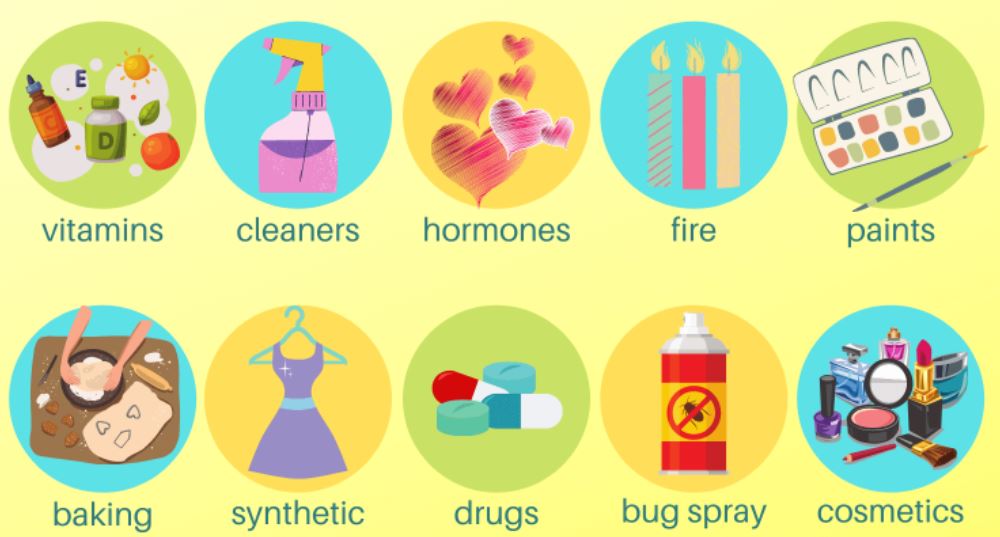What is a chemical reaction? A process involving a chemical change converting one or more reactants into one or more products is called a chemical reaction. It takes place by breaking and rearranging bonds between the reactant molecules to create new bonds in the products. Chemical reactions occur all around us and in the products we use and consume every day.
Types of Chemical Reactions
There are many types of chemical reactions, however, the six most common types of chemical reactions are explained below:
- Combination Reaction
The type of chemical reaction, which involve the combination of two or more reactants resulting in the formation of a single product, is called a combination reaction or synthesis reaction. A general representation of these types of reactions is as follows:
A + B AB
A common example of a synthesis reaction is the formation of sodium chloride (table salt), in which sodium (Na+) and chloride ions (Cl-) react to form sodium chloride:
Na+ + Cl- NaCl - Decomposition Reaction
The decomposition reaction is opposite to the combination reaction. It is a type of reaction in which a complex substance (a compound) is broken down into two simpler molecules. It is generally represented as:
AB A + B
An example of a decomposition reaction is the breakdown of metal hydroxides like sodium hydroxide (NaOH) as shown below:
2NaOH Na2O + H2O - Combustion Reaction
A combustion reaction involves the reaction of a substance (usually an organic compound) with oxygen to produce water and carbon dioxide releasing energy in the form of heat or light.
A + O2 H20 + CO2
Burning of fuel (Octane C8H18) in cars is a common example:
2C8H18 + 25O2 16CO2 + 18H2O - Neutralization Reaction
Also called acid-base reactions, neutralization reactions involve the reaction of an acid with a base producing salt and water.
Acid + Base Salt + Water
A common example of a neutralization reaction is the formation of sodium chloride by the reaction of hydrochloric acid and sodium hydroxide:
HCl + NaOH NaCl + H2O - Precipitation Reaction
A precipitation reaction involves the formation of an insoluble solid (that precipitates out from the solution) by the reaction of two soluble compounds.
A + B (soluble salts) Precipitate + C (soluble salt)
Precipitation of silver chloride by the reaction of silver nitrate and potassium chloride is a classic example:
AgNO3(aq) + KCL(aq) AgCl(s) + KNO3(aq) - Displacement Reaction
It may be a single or double displacement reaction. The reaction in which one element from a compound is displaced with another element is called a single displacement or substitution reaction:
A + BC AC + B
An example of this is the combination of Zinc with HCL as follows:
Zn + 2HCl ZnCl2 + H2
In a double displacement reaction also known as metathesis, both the compounds in the reactants exchange their elements or ions to produce two different compounds in the products as follows:
AB + CD AD + CB
A reaction between silver nitrate and sodium chloride is a good example:
AgNO3 + NaCl NaNO3 + AgCl
Check out other cool chemistry concepts with other chemistry kits below!

